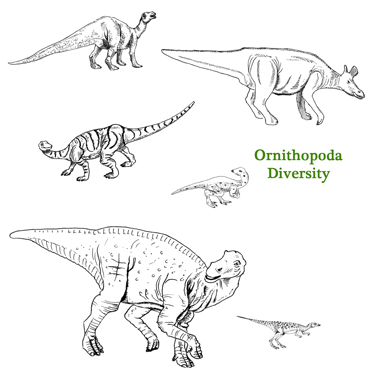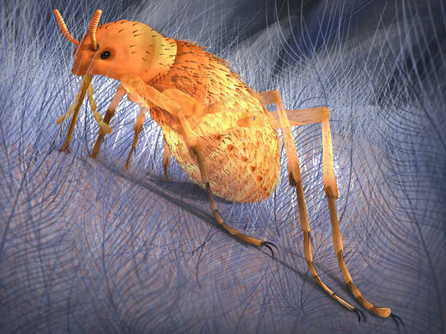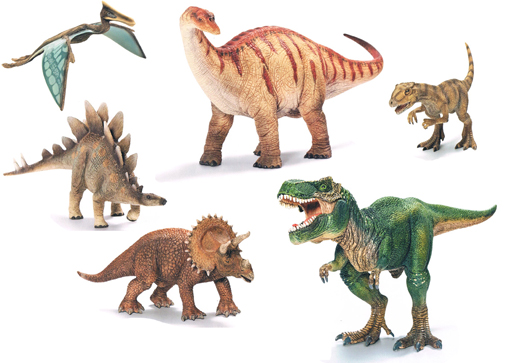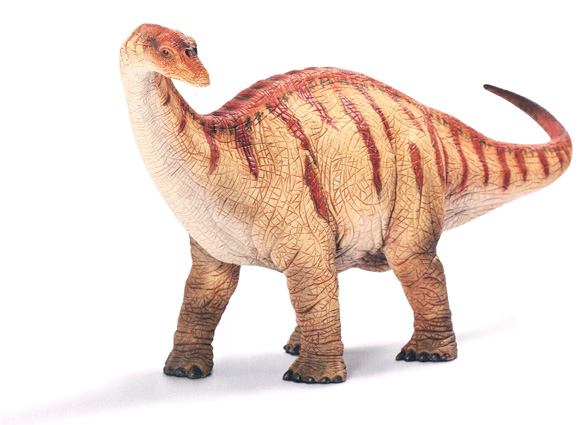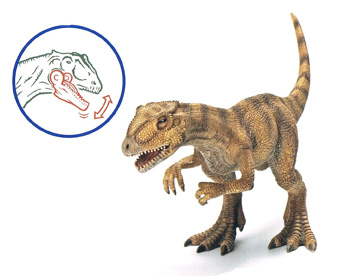New Research Suggests some Types of Dinosaur already Facing Extinction before the end of the Cretaceous
A new study suggests that some types of dinosaur were already facing extinction before all the Dinosauria were wiped out in the Cretaceous mass extinction event that ended the Mesozoic.
Cretaceous Mass Extinction
For many years, scientists have speculated on what finally caused the dinosaurs to die out, in what has been termed the Cretaceous mass extinction event, one of five major extinctions preserved in the fossil record. Sixty-six million years ago, a number of global climatic events – including sea level change, extensive volcanic eruptions and the impact of a huge extra-terrestrial object saw the demise of the dinosaurs – a group of reptiles that had dominated life on Earth for the previous one hundred and fifty million years.
It was not just the dinosaurs that became extinct, their archosaur relatives the pterosaurs (flying reptiles) also perished, along with the marine reptiles and many types of invertebrate. Palaeontologists have estimated that no major Order of life was entirely unaffected by the Cretaceous extinction. For example, some palaeobotanists have calculated that something like fifty percent of all land plant genera died out at this time in Earth’s history.
New Scientific Study
However, a study led by researcher Steve Brusatte, from Columbia University (New York, United States) indicates that some types of dinosaur were already in decline before the end of the Cretaceous. It may not have been a serious of cataclysmic incidents that saw off the Dinosauria, but some groups of these reptiles were already endangered and highly vulnerable to climatic and environmental change.
Steve Brusatte, is a highly respected academic and author with degrees in geophysical sciences from the University of Chicago and palaeobiology from the University of Bristol (England). A researcher based at the palaeontology department at Columbia University with strong connections to New York’s American Museum of Natural History, Steve has written extensively about the anatomy and the evolution of the Dinosauria.
This new study, adds to the huge volume of work done by scientists trying to understand the dynamics of extinction event. The question as to whether the dinosaurs went out with a bang or with a whimper has intrigued scientists for over one hundred and fifty years. A study of the fossilised remains of vertebrates, including dinosaurs found in the Maastrichtian age deposits of the famous Hell’s Creek formation of the western United States, showed that at the very end of the Cretaceous only a few types of dinosaur seem to have been present.
This research carried out in the 1980s showed that there were fewer different types of dinosaur around – dinosaur diversity was in decline, providing evidence that the Dinosauria were under considerable stress prior to any asteroid impact.
Now this new study, which also analysed the fossil record found in Upper Cretaceous deposits of the United States, also suggests that dinosaurs were in decline and that some groups were faring worse than others before the advent of a mass extinction.
Dinosaur Diversity – Under Threat in the Late Cretaceous
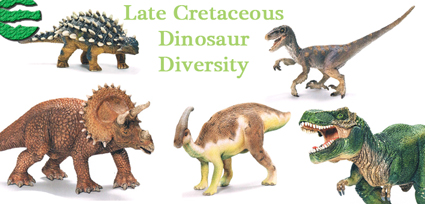
Not all the dinosaurs were thriving in the Late Cretaceous.
Picture credit: Everything Dinosaur
The picture above shows several Schleich prehistoric animal models. To view the Schleich range of dinosaurs: Schleich Prehistoric Animal Models.
Large, herbivorous dinosaurs such as the hadrosaurs (duck-billed dinosaurs) and the ceratopsians (horned dinosaurs such as Triceratops) were already beginning to disappear in North America over the last twelve million years or so of the Cretaceous Period. The mega predators such as the tyrannosaurids, including the famous dinosaur known as T. rex, smaller herbivores and the gigantic titanosaurs seem to have remained as relatively stable populations, or indeed diversified further.
Steve stated, that whilst most members of the public perceive the dinosaurs suddenly and dramatically coming to an end and that the Late Cretaceous was some sort of “Lost World that was violently interrupted by an asteroid impact”, this new study reveals a different picture.
He added:
“Some dinosaurs were undergoing dramatic changes during this time, and the large herbivores seem to have been mired in a long-term decline, at least in North America.”
A paper published in a scientific journal, summarises the work undertaken by the research team. It remains uncertain as to whether the mass extinction event was the final straw for the Dinosauria, or whether they would have survived without the intervention of a global catastrophe. The study team looked at the biodiversity in seven major dinosaur groups. They concluded that a number of types of dinosaur were already very vulnerable to extinction, certainly those in North America were under a great deal of population pressure.
Were Dinosaurs Already Facing Extinction?
This view contrasts with the popular belief that the non-avian Dinosaurs were thriving in the world of sixty-six million years ago. As an Order, it is certainly true that there were more different groups of dinosaurs in the Cretaceous than in the Jurassic. Avian dinosaurs (otherwise known as the birds) seem to have been thriving, although a number of families of birds did not survive into the Cenozoic. Titanosaurs, believed to have been absent from North America for much of the Late Cretaceous, seem to have been making something of a comeback in the Campanian and Maastrichtian faunal stages (76 million years ago to 66 million years ago approximately).
A number of titanosaur genera seem to have migrated up from South America across land bridges and re-populated the United States. Although many palaeontologists have speculated that these huge, long-necked creatures were limited in the geographical spread by the harsher and colder climate of more northern latitudes, the titanosaurs may have been able to increase their range in response to the demise of ornithischian herbivores such as the horned dinosaurs and the duck-bills who may have been declining in number.
It is likely that the debate as to how fast the dinosaurs became extinct is going to continue. Similar studies of Late Cretaceous European dinosaurs for example, show a different picture with a very dynamic ecosystem with large hypsilophodontid dinosaurs sharing their environment with many other types of mega fauna, including other dinosaurs, giant birds and large mammals.


